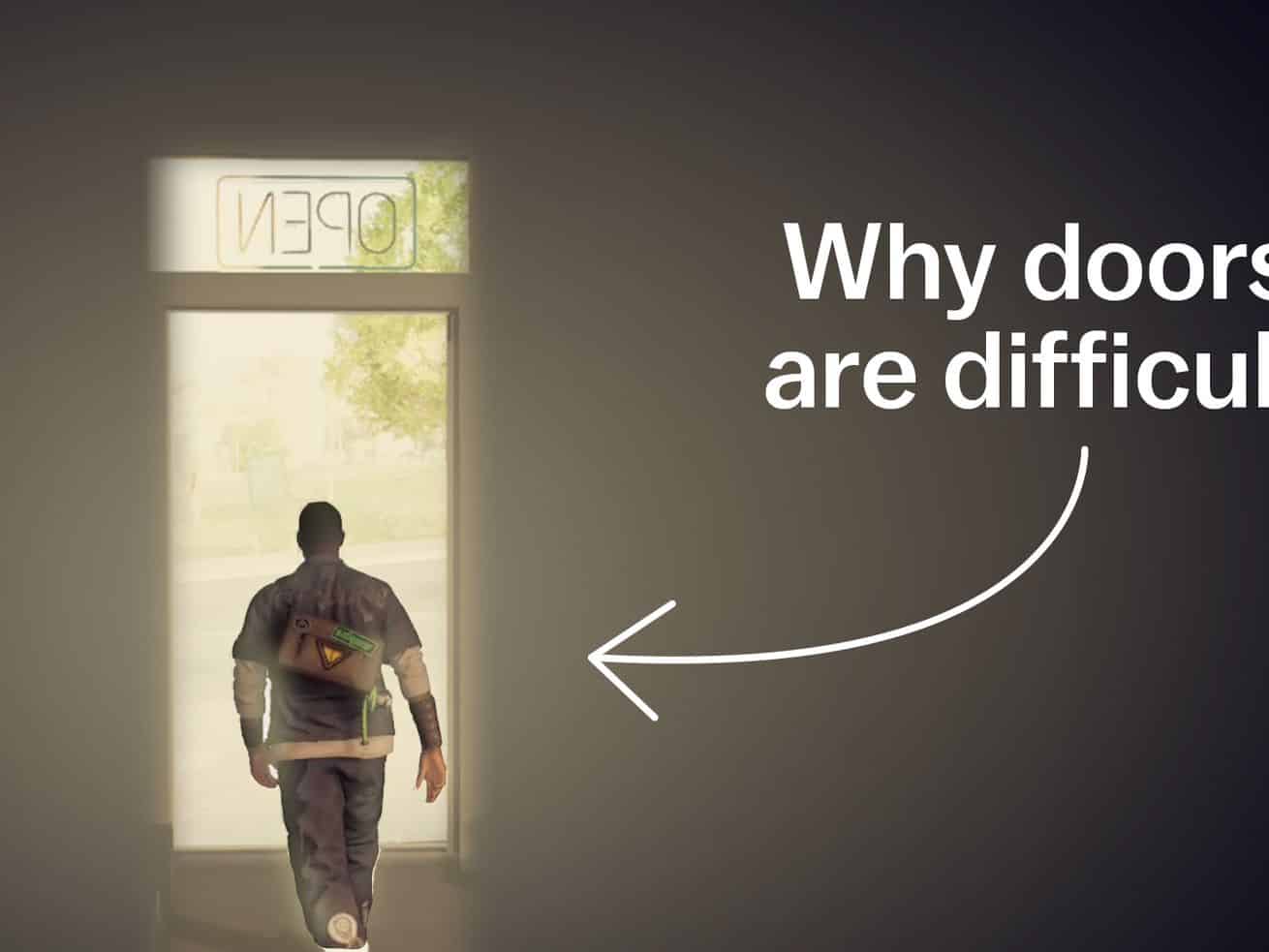Doors are hard because all of game development is hard.
Doors are so common in the real world that you probably don’t stop to think about how to operate them.
But for video game designers, that’s not the case. For a video game door to feel real, it takes a ton of challenging work. Video game doors have to interact seamlessly with their surroundings, make logical sense, and look good too. They have to strike a delicate balance between real-world accuracy and playability. All these factors mean designing a door usually requires work from every department at a game company.
And different types of doors require different amounts of work.
/cdn.vox-cdn.com/uploads/chorus_asset/file/22832118/image.png) Edward Vega
Edward VegaTier zero: No doors. This is the easiest way to go, and many games take this route. Even games that have doors often have many areas that eliminate doors entirely because they want to avoid the headache.
/cdn.vox-cdn.com/uploads/chorus_asset/file/22832120/image__1_.png) World of Warcraft/Blizzard Entertainment (played by Edward Vega)
World of Warcraft/Blizzard Entertainment (played by Edward Vega)Tier one: Proximity doors. These are the types of doors you’ll find in a sci-fi game like Halo. They usually slide in on themselves, so they don’t interact with any other objects in the scene. These doors are basically doorways, but with the impediment that you can’t see what’s on the other side until you are nearby.
/cdn.vox-cdn.com/uploads/chorus_asset/file/22832122/image__2_.png) Halo Reach/Microsoft Game Studios (played by Edward Vega)
Halo Reach/Microsoft Game Studios (played by Edward Vega)Tier two: Doors that look like real-world doors. The door has to swing forward and backward. How does the door react if there’s an object in its way? Can the door lock? Do enemy characters and companion characters know how to strategize around the door?
Game characters usually don’t physically touch the door, but they might perform an arm gesture that suggests they’re opening or closing it.
/cdn.vox-cdn.com/uploads/chorus_asset/file/22832124/image__3_.png) Hitman/IO Interactive (played by Edward Vega)
Hitman/IO Interactive (played by Edward Vega)Tier three: Doors that look like real-world doors and characters interact with them. These doors have all the difficulties of tier-two doors plus the added challenge of perceived interactions.
To make interactions look realistic, animators have to painstakingly animate characters’ hands appearing as though they’re grasping and letting go of objects, like doorknobs. Once animated, developers have to figure out the best way to seamlessly transition between the preset animations and the human player’s control.
/cdn.vox-cdn.com/uploads/chorus_asset/file/22832127/image__4_.png) The Last of Us Part II/Sony Interactive Entertainment (played by Edward Vega)
The Last of Us Part II/Sony Interactive Entertainment (played by Edward Vega)These same challenges crop up as you try to add almost any element to a game. Doors are hard because all of game development is hard.
Like any great piece of art, the blood, sweat, and tears that go into doors are often invisible. The best doors are the ones that work seamlessly and go unnoticed.
You can find this video and all of Vox’s videos on YouTube.
Author: Edward Vega
Read More



